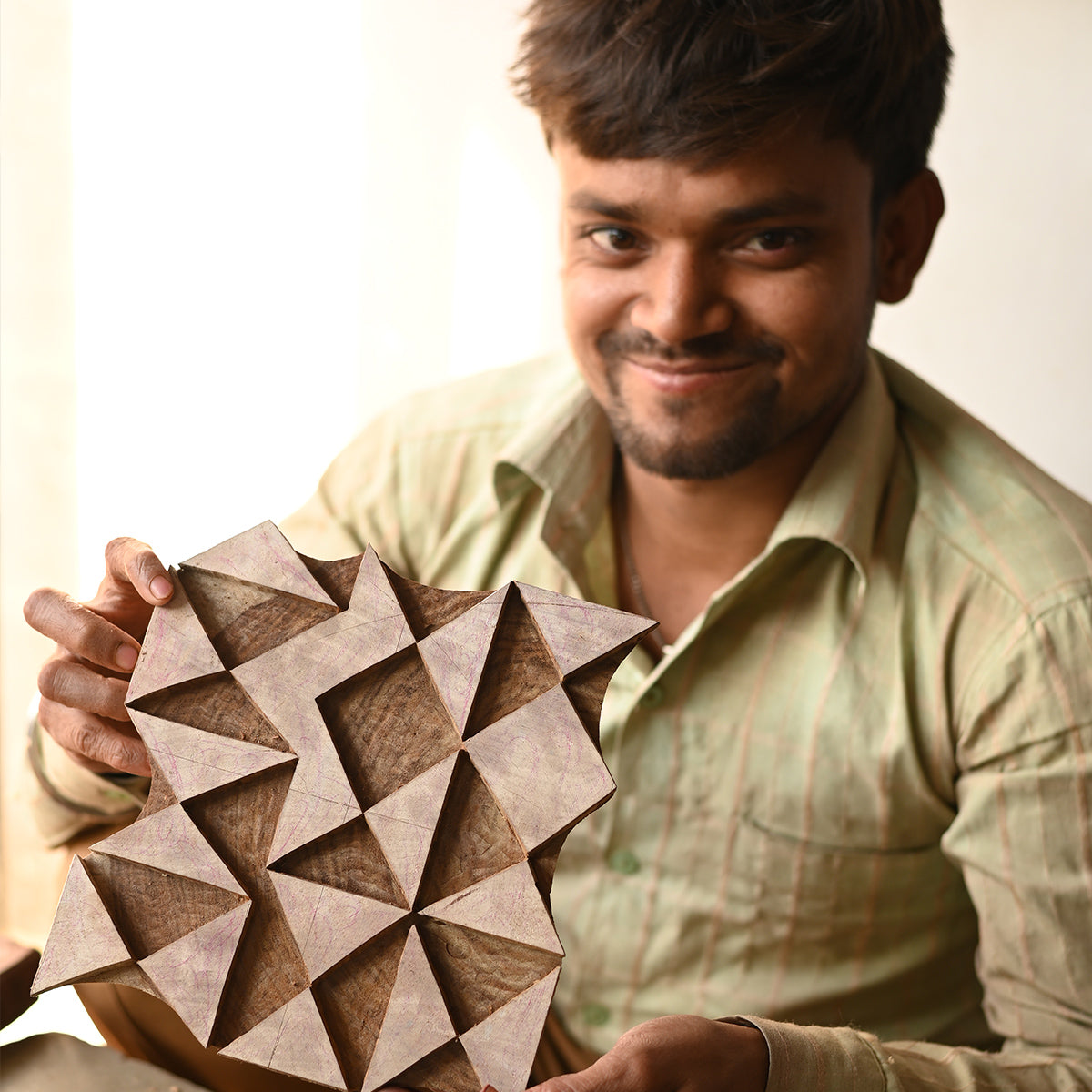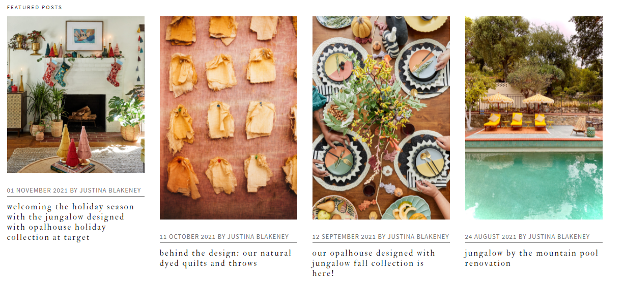
The Authenticity of Indian Block Print Cushion Covers
Modern decor and design have moved towards simplicity. The thought goes that the more we move towards a minimalistic look, our house feels more natural. But certainly, minimalistic doesn’t only mean plain blocks or generic solid colors. Indian block print cushion covers would seem anathema to this minimilistic look, even with the recent move towards interior design looks from the 70s. But what if we could go back even further. Let’s say ancient Egypt or Mesopotamia or more accurately Jaipur, Rajasthan. No, I won’t ask you to design your whole living space around an Indian-themed restaurant. What I’m about to tell you is a four-thousand-year-old art that for some reason flew past our radar until now.

The History of Block Printing
Block Printing, is primarily a textile art that found its origins in China, but it was in India where it flourished. Today, Indian block print cushion covers fall under one of those inexpensive yet premium things you can add to your living space to give it that minimalistic touch. But as a matter of fact, block printing wasn’t used for cushion covers. Like Preeti Gopinath, director of the MFA textile program at The New School said “history for Indians comes from what the invaders wrote.”
The history of block printing comes with the invasion of Babur, a distant relative of Genghis Khan, bringing the era of the Mughal Dynasty in India. Art was massively patronized during this era. India found some of its ever-lasting beauties like the Taj Mahal from the Mughals. Block Printing has remained largely unchanged since the Mughals but the earliest record of block printing was found during an excavation of Egypt. It dated around 3500 to 1300 BC and belonged to the Indus Valley Civilization. So, we can safely say that block printing has been an important part of Indian culture and an integral aspect of society.

The Art of Block Printing
Talking about the art itself, block printing is something that might look basic but is one of the most difficult forms of fabric art. The placement of the blocks and the geometric accuracy of the patterns require an advanced sense of mathematics and aesthetics. This art usually runs in the family and is passed down to the younger generations. Almost all Block printing is done in one of three ways; direct, resist, or discharge printing. The thing that is most common in all three processes in the wooden frame that is carved by hand. A block for each element of the pattern is made by the carver, which means that every Indian block print cushion cover has a wooden block for all the borders, leaf groupings, or flower styles. But these processes are somewhat different on grounds of:
- The direct method of block printing is the simplest in the lot. Just like the name suggest it involves dipping the block in dye and printing from it on the fabric. This process is more like how we would use an official stamp, except it needs impeccable accuracy and positioning. The direct printing method is simple enough to be tried at home. All you need to do is lay out the cloth you want to print on, flat and straight. Making sure it has no creases is important as the print might get distorted because of it. Then you need to apply liquid fabric print on a homemade arrangement of patterns and press hard on the cloth. Remember to apply equal pressure on all sides. Let the cloth hang dry after the paint has settled and then wash it to get rid of the excess paint.
- Discharge printing is used on colorful background to make elegant white patterns. The fabric is dyed and then left to dry. Once the color has set in, a simple bleaching agent is applied to the block and then the block is pressed on the fabric. This usually takes longer than the direct method because the beach takes a bit more time to remove the color.
- Finally, Resist Printing is a completely different form of printing altogether. It is so unique that some people have even argued that might not be called printing. In this process, a greasy wax-like substance is applied to the blocked and then pressed against the fabric to create stencils. Then the cloth is dyed beautifully and the stencils are removed to expose extraordinary patterns that emerge out of the untouched original color of the fabric. Indian block print cushion covers usually use the direct method to conserve that minimalistic aesthetic.
Types of Block Printing
If we primarily focus on Rajasthan, the state where it originated, the cities that steal the limelight are Jaipur, Bagru, Sanganer, Pali, and Barmer. The Rajasthani block printing is centered on the colorful depiction of gods and goddesses. While Bagru is known for its Syahi Begar and Dabu prints (which are essentially done in yellow and black and are made using the resist printing technique), Calico prints are famous in Sanganer (easily recognized by the presence of dual-color prints done continually in diagonal rows making them perfect for Indian block print cushion covers) and Doo Rookhi prints (that appear on either side of the fabric). Barmer is famous for printing red chilies and trees that exhibit a blue-black outline, meanwhile, Sikar and Shekhawat prints feature motifs of lions, peacocks, camels, and horses.
So what are the different types of block printing?
- Bagh: Bagh is an indigenous form of block printing that originated from the bagh district in Madhya Pradesh. It started when migrants from Sindh settled around the Bagh River. It includes using bring colors and geometric designs. This is a form of printing that cannot be done anywhere else because artisans use the chemical properties of the river to obtain the desired effect.

- Sanganeri: Sanganeri is arguably the most famous block printing in Rajasthan. This form is famous for its intricate designs on blocks which are difficult to attain. The artisans mark the fabric before printing to maintain the symmetry of the design.

- Batik: this is also a widely available form of block printing that saw its origin in Egypt. The process of this design is similar to ‘Resist printing’ and involves soaking, beating, drawing of patterns, and applying wax. This makes a very unique design that is very different from the conventional form of block printing. The designs are surreal and intricate.

- Kalamkari: coming out of the southern state of Andra Pradesh, this form of printing tells a tale in cloth. Like a bard's song, the fabric is printed with descriptive imagery of folk and mythological tales. The pre-dyed cloth is printed using different colors following a predetermined color scheme. Brushes made out of bamboo sticks are used to paint the detailed section, by hand.

- Bandhani: With 'Bandhani' meaning to tie, this form is no different from tie-dye. This is a really old form of art that was revived by the Khatri community of Gujrat, who plucked the designs with fingernails and then dyed it. Dots of different sizes are used to make the block design on the backdrop of vibrant color.

Some of the more notable places in Gujrat are Dhamadka, Kutch, Bhavnagar, Vasna, Rajkot, Jamnagar, Jetpur, and Porbandar. Punjab’s textile artist belongs to the Chhimba community who is expertise in floral and geometrical motifs in light pastel hues. While West Bengal’s Serampore has incorporated vibrant patterns in their prints.

As rightly said by Gopinath “When I think of block print, a few things come to my mind: the exquisite design, color, composition, and the hand and heart of a craftsperson.”
Where can I find Indian Block Print Cushion Covers?
This is the question that is running in everyone’s mind after looking at so many types of fascinating Indian block print cushion cover types. Several places offer block print but we at, The Artisen offers the most authentic ones. Let us get a glimpse of the block print products at The Artisen.
You don’t have to travel across the world for getting your hands on the elegant Jodhpur prints, or the 100% cotton Dhurrie runner, or the traditional hand-blocked pillow covers. We offer products that are solely made by Indian artisans who create endless numbers of traditional Indian block print cushion covers. Our products are available for wholesale purposes as well, and that too for affordable price ranges.
If you are equally dazzled by this amazing form of art and want to introduce them to your life, you should check out The Artisen. The Artisen have a beautiful collection of pillow covers that are so minimalistic yet beautiful, they will be a conversation piece. And since you now know the history behind this art, you would certainly have a story to tell. Our personal favorite is the Sikar Block print that brings in the true flavors of Jaipur.






